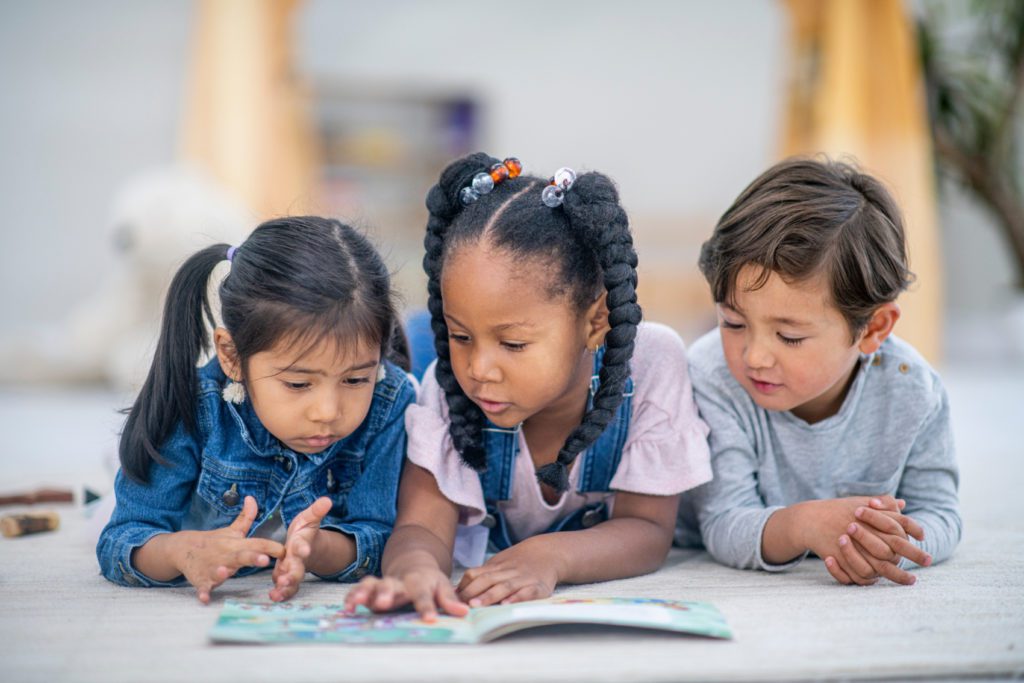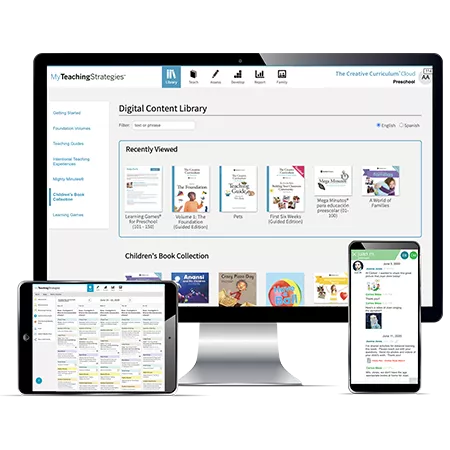A Culturally Responsive Approach: More Than Translation


Here at Teaching Strategies, we strive to support children with culturally responsive materials: our materials provide children with opportunities to learn in meaningful ways that goes beyond using a translation of an English learning experience. A translation is a first step to providing support to English-language learners, but a direct translation of an English song, rhyme, game, or chant may have little meaning to children who speak Spanish. In Spanish, there are different phonemic structures, cultural concepts, and important vocabulary words. To truly nurture children’s linguistic ability in Spanish, we sometimes need to go beyond simple translation.
Think about hearing the song “Feliz Navidad,” over to the holidays. Do you recall dancing to the “Macarena” at a wedding or party? You might have started singing along or doing the motions, right? I’m sure with the popularity of “Feliz Navidad” you found yourself singing every word in English and Spanish. As you were dancing along to the “Macarena,” did you understand the Spanish lyrics? Even as you had fun singing along, did you struggle with pronunciation? Were there words and phrases that didn’t resonate with you as an English speaker? Bilingual music boosts learning into overdrive and, most notably, it allows multilingual speakers the ability to connect and sing along together.
More than a Spanish Translation: a Transadaption
The Creative Curriculum is available in both English and Spanish, like most early childhood education curriculums. But The Creative Curriculum takes translation a step further. Teaching Strategies takes a culturally responsive approach curriculum materials.
Being in this profession for as long as I have, I have used many curriculums. This family, child, school-friendly program, The Creative Curriculum, has made my last 15 years of teaching and engaging with multi-cultural families and co-worker such a rewarding experience.”
–Felecia Jones, Preschool Teacher
Rosemount Center, Washington, DC
When children are exposed to rich, consistent models in their first and second languages, research indicates children are able to achieve fluency in both languages. This means that children can continue to develop their knowledge, skills, and abilities in their first language while acquiring these skills in their second language. The Creative Curriculum incorporates this culturally responsive approach throughout the materials and Daily Resources. So, how can songs, rhymes, and chants help support both first and second language learning? First, let’s take a look at the songs we traditionally sing with young children and analyze what has made them popular for hundreds of years!
For example, you may sing “Hickory Dickory Dock” with your children. Let’s compare “Hickory Dickory Dock” in English to the Spanish translation.
English
Hickory Dickory Dock
The mouse went up the clock
The clock struck one
The mouse went down
Hickory Dickory Dock
Spanish
Hickory Dickory Dock
El ratón subió al reloj
Marcó la una
El ratón bajó
Hickory Dickory Dock
You and the children in your class might enjoy singing “Hickory Dickory Dock.” To support Spanish speakers, you might go online and look for the Spanish translation. But the song will make very little sense to them. Why? In English, the phrase “hickory dickory dock” is a playful nonsense phrase that has a very important purpose—to practice the strong consonant sounds that are important in speaking English. When translated into Spanish, the phrases do not rhyme. English nursery rhymes like “Pat-a-cake,” “Humpty Dumpty,” and “Mary, Mary, Quite Contrary” were created long ago to support young children in developing the ability to form the sounds, or phonemes, that are used in the English language. Many nursery rhymes in English also feature concepts and vocabulary that are less common in modern, everyday speech but familiar to native speakers who grew up with them. Think of your favorite English nursery rhymes, and you’ll notice extensive references to royalty and farm life or unusual words such as tuffet, cockleshells, porridge, or ‘curds and whey.’ In our materials and resources, we go beyond a translation and provide culturally relevant examples for Spanish-speaking children.
We recognize that the tunes and “stories” of the songs and rhymes are extremely helpful for children to learn. Children who are learning two languages can (and should be) exposed to these classic nursery rhymes in both languages. Once they are familiar with the tunes, they can practice by singing with the other children in English. Singing in a group is a “low-risk” way for children who are learning English to practice speaking English without feeling singled out.
Culturally and Linguistically Responsive Materials
Our approach in The Creative Curriculum is designed to meet the needs of all learners, support the whole child, and provide culturally and linguistically responsive teaching materials. Our Spanish materials are trans-adaptated, rather than simply translated. Our goal is to move beyond translation and find the most engaging ways to address the needs children have in all areas of development and learning. Within The Creative Curriculum, you will even find tips designed specifically to support children as they’re exploring their first or second language.
